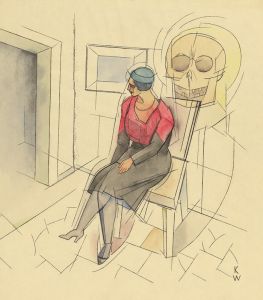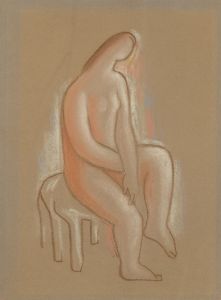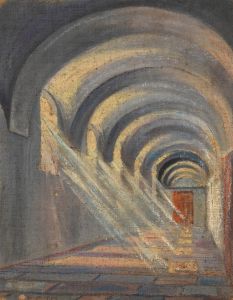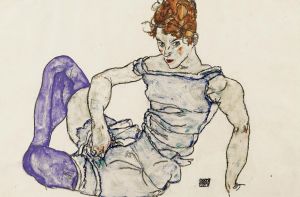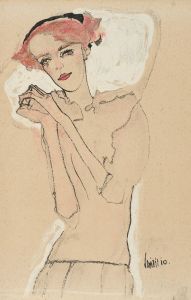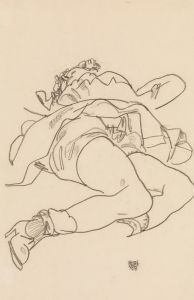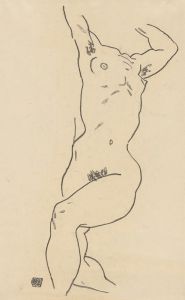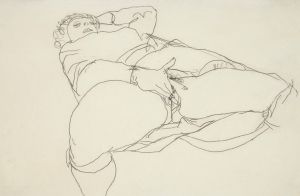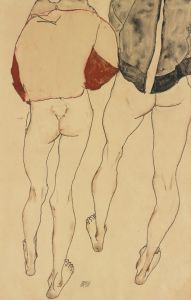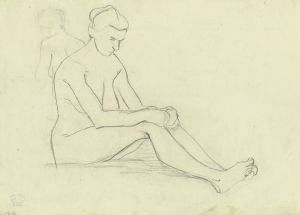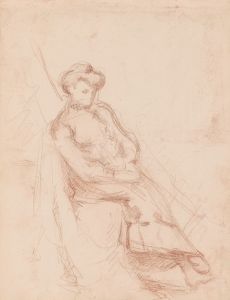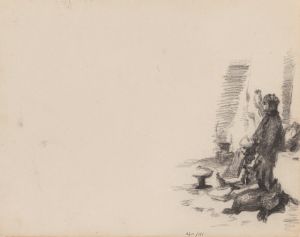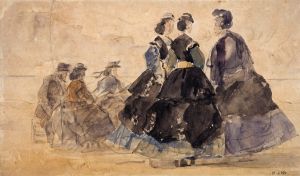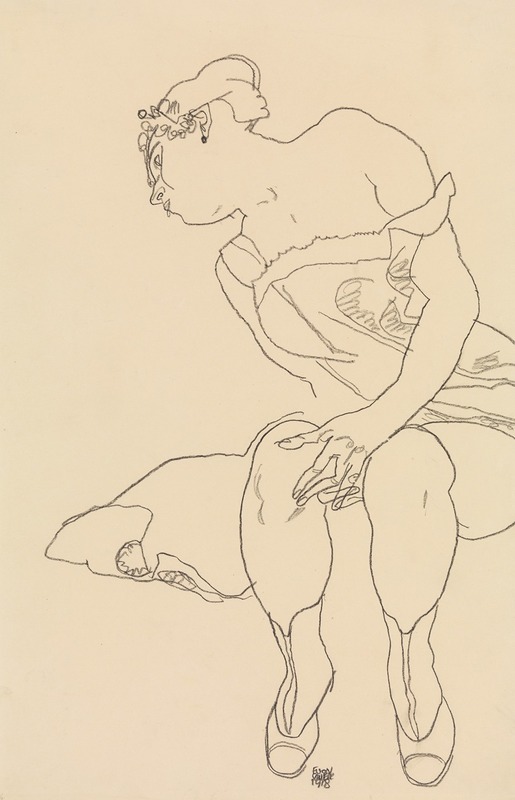
Seated Woman in Corset and Boots
A hand-painted replica of Egon Schiele’s masterpiece Seated Woman in Corset and Boots, meticulously crafted by professional artists to capture the true essence of the original. Each piece is created with museum-quality canvas and rare mineral pigments, carefully painted by experienced artists with delicate brushstrokes and rich, layered colors to perfectly recreate the texture of the original artwork. Unlike machine-printed reproductions, this hand-painted version brings the painting to life, infused with the artist’s emotions and skill in every stroke. Whether for personal collection or home decoration, it instantly elevates the artistic atmosphere of any space.
Egon Schiele, an Austrian painter known for his distinctive style and provocative subject matter, created "Seated Woman in Corset and Boots" in 1918. This work is emblematic of Schiele's exploration of the human form and his interest in capturing the raw, unfiltered essence of his subjects. Schiele was a leading figure in early 20th-century Austrian art, closely associated with the Expressionist movement, which sought to convey emotional experience rather than physical reality.
"Seated Woman in Corset and Boots" is a striking example of Schiele's mature style, characterized by bold lines, stark compositions, and an intense focus on the human figure. The painting depicts a woman seated, wearing a corset and boots, with her body twisted in a manner that emphasizes her form and the tension within her pose. Schiele's use of line is particularly noteworthy; his confident, almost aggressive strokes outline the figure with precision and energy, creating a sense of immediacy and intimacy.
The subject's expression and posture convey a complex mix of vulnerability and defiance, a duality that Schiele often explored in his work. The corset, a garment traditionally associated with femininity and restriction, contrasts with the woman's assertive pose and direct gaze, challenging conventional notions of beauty and propriety. This tension is a hallmark of Schiele's portraits, which frequently delve into themes of sexuality, identity, and the human psyche.
Schiele's work was often controversial during his lifetime, as he pushed the boundaries of acceptable subject matter and artistic expression. His frank depictions of nudity and eroticism drew both admiration and criticism, and he faced legal challenges due to the perceived indecency of some of his works. Despite this, Schiele's art was celebrated for its innovation and emotional depth, and he gained a significant following among collectors and fellow artists.
The year 1918, when "Seated Woman in Corset and Boots" was created, was a pivotal one for Schiele. It marked the end of World War I and a period of significant personal and professional growth for the artist. Tragically, it was also the year of his untimely death at the age of 28, due to the Spanish flu pandemic. Despite his short life, Schiele left behind a substantial body of work that continues to influence and inspire artists and art lovers worldwide.
"Seated Woman in Corset and Boots" is housed in a private collection, making it less accessible to the public than some of Schiele's other works. However, it remains an important piece within his oeuvre, exemplifying his unique approach to portraiture and his ability to capture the complexities of the human condition. Schiele's legacy endures through his innovative techniques and the emotional power of his art, securing his place as a pivotal figure in the history of modern art.





